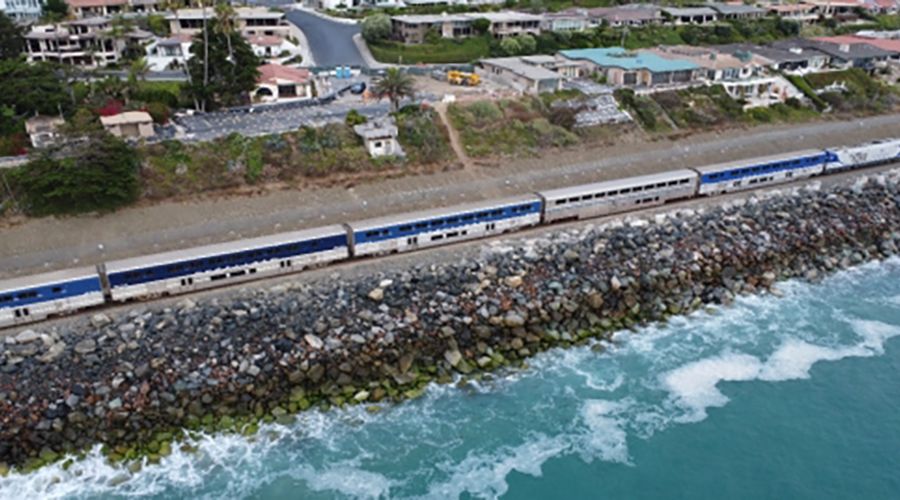Stay updated on news, articles and information for the rail industry
8/15/2023
Rail News: Passenger Rail
OCTA hires HDR to lead California coastal rail line study

The Orange County Transportation Authority yesterday picked HDR Engineering Inc. to lead a study of potential solutions to protect the coastal rail line that connects passengers, freight and military assets from San Diego County to Orange County and northern destinations.
The South Coast Rail Infrastructure Feasibility Study and Alternative Concepts Analysis will pinpoint the issues threatening the rail corridor and provide solutions to protect it, OCTA officials said in a press release.
Two major landslides in the past year near the rail line in San Clemente forced the temporary closure of the track to passenger service for several months while OCTA and its partners performed emergency projects to stabilize the track and protect it from falling debris.
The track through San Clemente reopened to all service in July and remains open, including to Metrolink regional rail and Amtrak Pacific Surfliner passengers.
Now OCTA is moving ahead with the first of two studies to seek longer-term solutions.
In February, OCTA's approved the two-phase approach: The first phase will examine short- to medium-term solution; the second will examine longer-term solutions.
Phase 1 study goals, which include the cities of Dana Point and San Clemente and unincorporated coastal regions of Orange and San Diego counties, include:
• developing options to protect coastal rail infrastructure in its current location;
• gaining a more detailed understanding of climate effects on the rail line;
• identifying potential solutions for beach erosion; and
• consulting with stakeholders and agencies each step of the way.
The study is expected to cost $2 million, with grant funding already identified. Future costs for making the necessary improvements along the 7 miles of south Orange County coast would be identified through the study, OCTA officials said.
Phase 2 goals include:
• partnering with LOSSAN, state and federal agencies;
• developing options for protecting or potentially moving the rail line;
• creating an action plan; and
• consulting and engaging residents and key stakeholders throughout the process.
OCTA will partner with other agencies on the study, such as Metrolink, the LOSSAN Rail Corridor Agency, the California Coastal Commission and the U.S. Army Corps of Engineers.
Contact Progressive Railroading editorial staff.


 LRW Honors Amtrak’s Acheson As Railway Woman Of The Year
LRW Honors Amtrak’s Acheson As Railway Woman Of The Year
 From Editor-In-Chief Foran: Of Gender Equity And Inclusion
From Editor-In-Chief Foran: Of Gender Equity And Inclusion
 Spotlight On Some Of Today’s Rail Safety Products
Spotlight On Some Of Today’s Rail Safety Products
 Women of Influence in Rail eBook
Women of Influence in Rail eBook
 railPrime
railPrime








